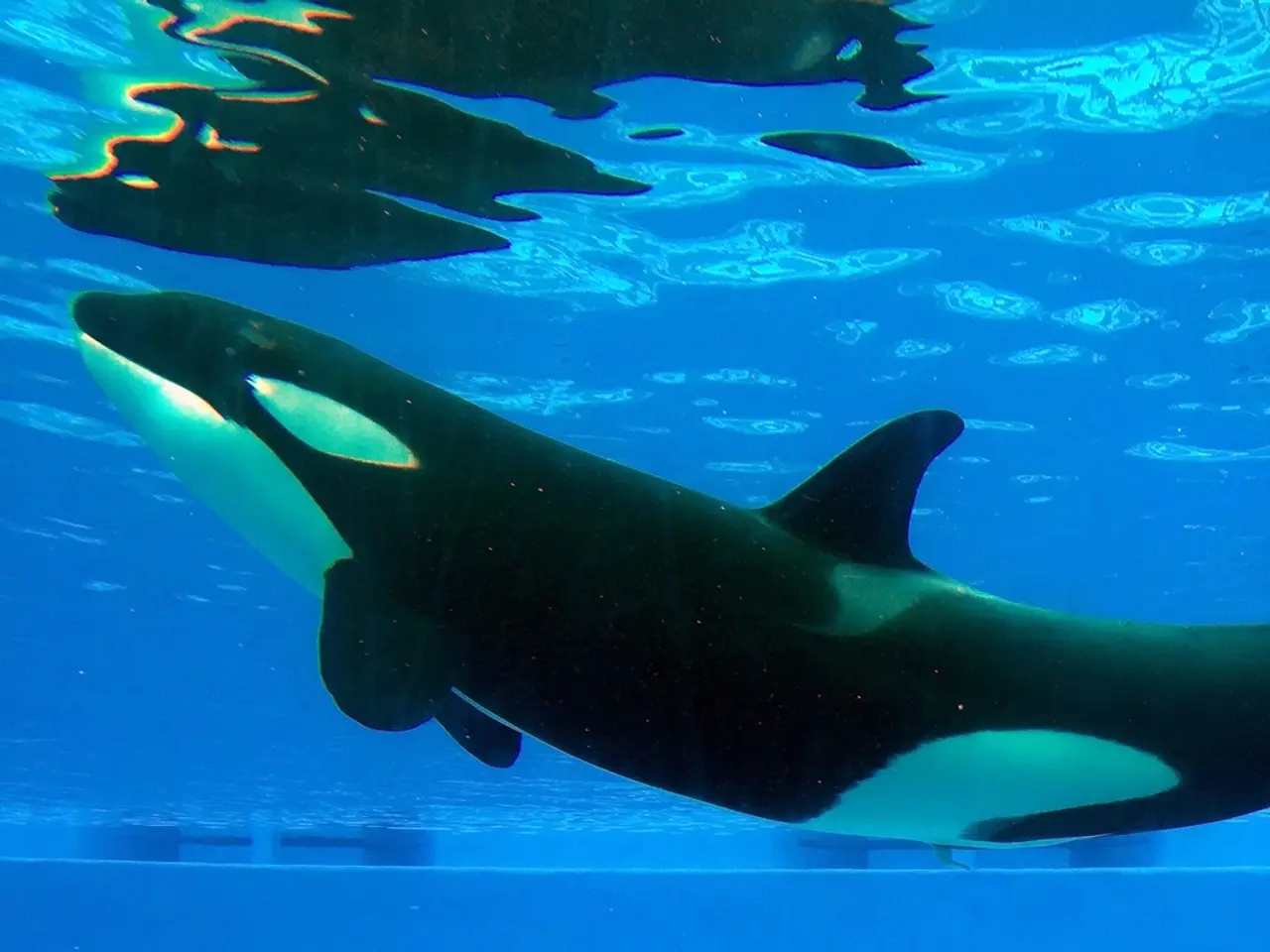Unconventional Path in Whale Studies: Disrupting Established Trends among Leading Whale Research Organizations
In the realm of marine conservation, joint publications are becoming a powerful force, driving collaborative efforts that address complex global challenges. These collaborations, often spearheaded by large-scale international partnerships and interdisciplinary collaborations, are making significant strides in advancing scientific knowledge and conservation efforts.
One such example is the Global Ocean Biodiversity Initiative (GOBI), an international partnership that focuses on conserving marine biodiversity. By providing expertise, data, tools, and methodologies to identify ecologically or biologically significant marine areas (EBSAs), GOBI supports multiple intergovernmental and regional organizations, contributing to global efforts in marine conservation by informing policy and management regarding biodiversity protection.
Another notable example of collaboration is the research and reports authored jointly by diverse stakeholders, including non-profits, local governments, and investors, around marine protected areas (MPAs) financed through public-private partnerships (PPPs) in countries like Belize, the Dominican Republic, Indonesia, the Philippines, and Zanzibar. These works provide insights into sustainable ocean economy models and management strategies for MPAs, emphasizing financial sustainability, community involvement, and ecological impacts.
The UN Ocean Conferences also play a pivotal role in these collaborative efforts. Scientists, policymakers, and conservation organizations co-author documents and scientific assessments to underpin global ocean governance and conservation targets. These collaborative works serve as scientific backing for international agreements and action plans, focusing on transparency in fishing practices and marine biodiversity protection.
These joint publications challenge the traditional "publish or perish" culture by emphasizing collaboration and shared impact, integrating diverse expertise and stakeholders, focusing on long-term sustainability and actionable outcomes, and promoting open data and transparency.
In a recent study, the field of whale environmental DNA (eDNA) research took a significant step forward. The eWHALE study, published in the journal Environmental DNA, collected eDNA samples from three species: humpback whales, killer whales, and harbor porpoise. The study systematically modified water volume, sampling timing, sampling location, and filter type to enhance cetacean detectability. Results showed eDNA detectability declined over time, but a strong DNA signature was still present after five minutes for all three species.
The eWHALE study offers a rare chance to highlight shared patterns in eDNA-based monitoring for marine mammals across the Atlantic and Pacific. The joint publication of the eWHALE study and its companion study has fostered networking between the two research groups, with hopes of working closer together in the future to unlock more eDNA secrets for whales.
The research from the eWHALE study was supported partially by a financial contribution from Fisheries and Oceans Canada's Coastal Environmental Baseline Program and Prince of Whales and North Island Kayak. To keep up to date with the eWHALE's work, follow them on social media platforms such as Bluesky (@ewhale-dna.bsky.social), Instagram (@ewhale.dna & @our websitewise).
In summary, the field of marine conservation is evolving, with a growing emphasis on collaborative, impact-driven science. These collaborations are challenging the traditional "publish or perish" mentality by valuing collaborative outputs, interdisciplinary approaches, and policy-relevant findings over sheer publication volume. As these joint publications continue to shape the field, we can look forward to a future of more effective and sustainable marine conservation efforts.
- The realm of health-and-wellness can learn from the collaborative strategies in marine conservation, as joint publications in science promote shared impact and integrate diverse expertise, similar to the eWHALE study that used a multi-disciplinary approach to whale environmental DNA research.
- In the field of education-and-self-development, students could critically analyze the collaboration on marine conservation efforts as a case study for sports teams and fitness-and-exercise groups, demonstrating that unity, shared goals, and diversity of talent lead to significant improvements in their respective domains.
- Researchers in the field of learning can investigate how joint publications in areas like marine conservation can be adapted to better support interdisciplinary collaborations, leveraging this success for collaborations that address climate change and global health issues, creating a more holistic understanding of these interconnected challenges.




